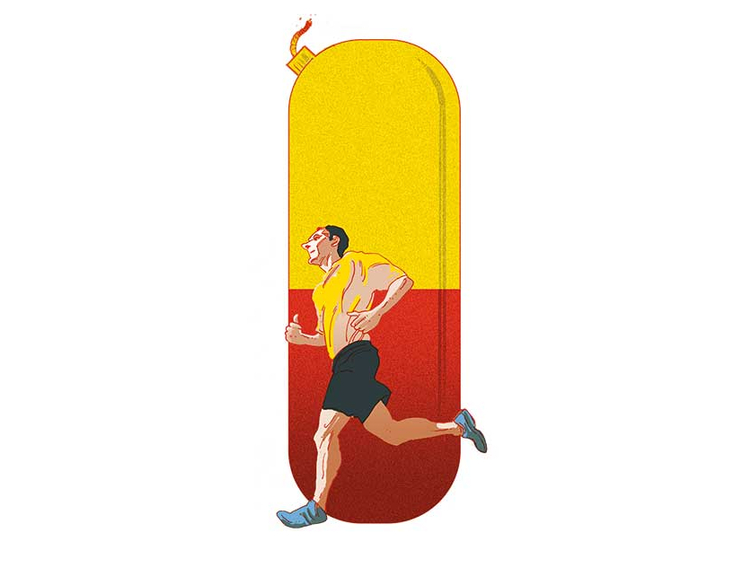
Many Americans would rather take a drug than change their habits to control a persistent ailment. Yet, every medication has side effects, some of which can be worse than the disease they are meant to treat.
Drugs considered safe when first marketed can turn out to have hazards, both bothersome and severe, that become apparent only after millions of people take them for a long enough time.
Such is the case with a popular class of drugs called proton pump inhibitors, or PPIs, now used by more than 15 million Americans and many more people worldwide to counter an increasingly common ailment: Acid reflux, which many people refer to as heartburn or indigestion.
These medications are now linked to a growing number of complications, ranging in seriousness from nutrient deficiencies, joint pain and infections to bone fractures, heart attacks and dementia.
While definitive evidence for most of the risks identified thus far is lacking, consumers plagued by acid reflux would be wise to consider an alternative approach, namely diet and lifestyle changes that can minimise symptoms and even heal damage already done.
Acid reflux is more than just a nuisance. It involves the backward flow of stomach acid into the tissues above it. It results when the lower oesophageal sphincter, a ring of muscle between the aesophagus and the stomach, fails to close tightly enough to prevent the contents of the stomach from moving up instead of down. Sometimes the upper sphincter, between the oesophagus and the throat, malfunctions as well.
Acid reflux is a serious disorder that can and must be treated to prevent symptoms and stave off potentially life-threatening consequences.
Known medically and commercially as GERD, the acronym for gastro-oesophageal reflux disease, repeated bathing of the soft tissues of the oesophagus with corrosive stomach acid can seriously damage them and even cause oesophageal cancer, which is often fatal.
Contrary to what many believe, heartburn is but one of the many symptoms of GERD, and failure to recognise the others when heartburn is not among them can result in harmful untreated reflux.
In addition to indigestion, GERD can cause a persistent dry cough, sore throat, frequent throat clearing, hoarseness, burping or hiccups, bloating, difficulty swallowing and a sensation of a lump in the throat.
If, when faced with such an otherwise unexplainable symptom, your doctor fails to think of GERD as a possible reason, you might suggest it yourself. An examination of the oesophagus may be the only way to find out if someone without obvious heartburn has acid reflux but doesn’t know it.
Dr Jonathan Aviv, an ear, nose and throat specialist affiliated with Mount Sinai Icahn School of Medicine in New York, was in his mid-30s when he developed a frightening symptom that turned out to be caused by acid reflux.
He was suddenly awakened one night gasping for air and feeling like he was being choked. Because he’d never complained of heartburn, his own doctor had trouble believing that acid reflux could be the explanation. Yet, treating this ailment brought relief and set Aviv on a years-long journey to learn how best to manage it.
He has now written a book, “The Acid Watcher Diet,” that both explains how the varied symptoms of acid reflux arise, and details a programme for healing and prevention that can help many, if not most, people avoid the medications commonly prescribed to treat it.
One characteristic often associated with acid reflux — being overweight, especially with abdominal obesity — largely explains why the condition has become so common in western countries. Someone with a body mass index in the overweight range is almost twice as likely to have GERD as a person of normal weight. Losing weight is one of the best ways to find relief without having to rely on medication.
Quitting smoking, limiting alcohol and avoiding carbonated drinks are also important protective measures. Smoking and alcohol can loosen tension of the upper oesophageal sphincter and cause symptoms of reflux like hoarseness, post-nasal drip and shortness of breath by irritating the mouth, larynx and trachea, Aviv reports.
Eating big meals, lying down before a meal is digested, and exercising too soon after eating can also trigger symptoms. Reflux sufferers are often advised to eat five or six small meals a day rather than one or two big ones, and to avoid eating within three hours of bedtime. For further protection, the head of the bed can be raised by 6 inches or more.
But while certain common foods — like raw onions, garlic, citrus juices, coffee and chocolate — are likely to cause reflux in most people with the condition, Aviv and other experts emphasise that everyone is different, and trial and error is the most effective way to determine an individual’s trigger foods and drinks. Specialists suggest keeping a food and drink diary for a week or two, recording everything consumed and the timing of symptoms to help identify a person’s trigger foods.
A food does not have to be obviously acidic to be troublesome. High-fat foods are problematic for many people because they take a long time to digest. Aviv points out that many commercially produced foods and drinks are treated with acid-containing substances to enhance flavour and shelf life. Accordingly, the 28-day “healing” diet he suggests consists almost entirely of natural, unprocessed foods, especially lean protein foods like light-meat poultry, fish, egg whites and low-fat dairy, beans (combined with whole grains), and nonacidic vegetables and fruits.
High-fibre foods are very helpful, “second only to eliminating acidic foods” Aviv said. Fibre enhances digestion, reducing pressure on the lower esophageal sphincter, and can aid in weight loss and maintenance, among other benefits like reducing inflammation. Try to eat a pound of vegetables each day, half of which are cooked and the other half eaten raw, as well as half a pound of raw fruit. Good sources include broccoli, carrots, beets, green leafy vegetables, apples, berries, bananas, avocados and pears. Other helpful fibre-rich foods include almonds, walnuts, lentils, chickpeas and lima beans.
If adopting the above measures fails to fully control acid reflux, taking a proton pump inhibitor may also be needed. But a PPI should be used in the lowest effective dose at the correct time and for the shortest possible period, experts say. “Studies have revealed that 80 per cent of Americans may be taking these powerful meds incorrectly,” Aviv wrote. He said they should be taken 30 to 60 minutes before eating breakfast or dinner (or both), but not used as an “antidote” to consuming acidic foods.
— New York Times News Service
Jane E. Brody is an American author on science and nutrition topics, who has written a number of books and reported extensively for the New York Times as its ‘Personal Health’ columnist.










